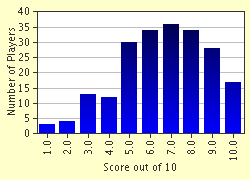Quiz Answer Key and Fun Facts
1. Which of these artists is classified as Baroque?
2. Donatello is from what art historical period?
3. Which of these architects is associated with the International Style?
4. Which twentieth-century art movement is Henri Matisse most famous for being involved with?
5. Which of these is the lesser known Cubist?
6. "I am a Rococo artist, and my painting 'The Swing,' depicts a woman in a swing high in the air, kicking off her slipper. Her lover is looking up. Cupid holds a finger to his mouth in the painting. It's frivolous, sensuous, and clever. The woman is flirting with her fiancee, and the background is of a sylvan wood. Who am I?"
7. Which of these was a Post-Impressionist?
8. Which of these was a Dada artist?
9. How did the artist of "Fountain" sign his work?
10. When were the Limbourg brothers active?
Source: Author
specialkarah
This quiz was reviewed by FunTrivia editor
agony before going online.
Any errors found in FunTrivia content are routinely corrected through our feedback system.


